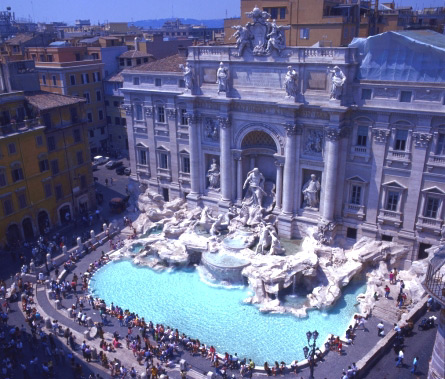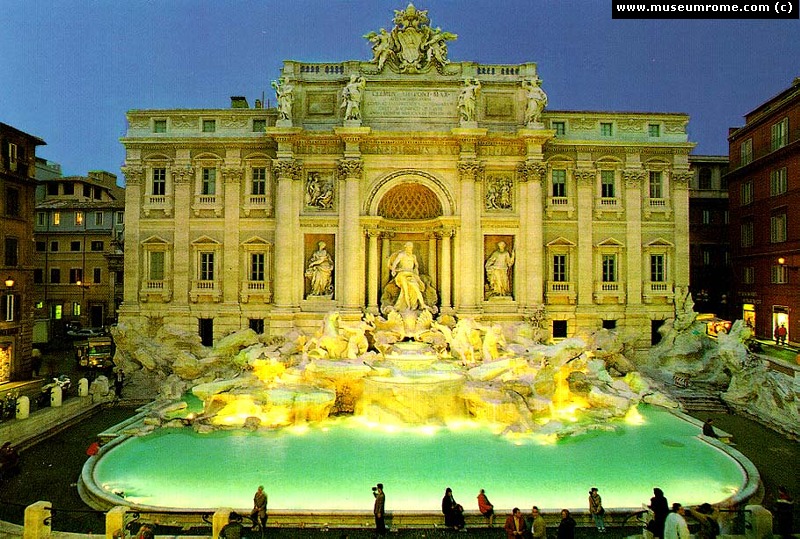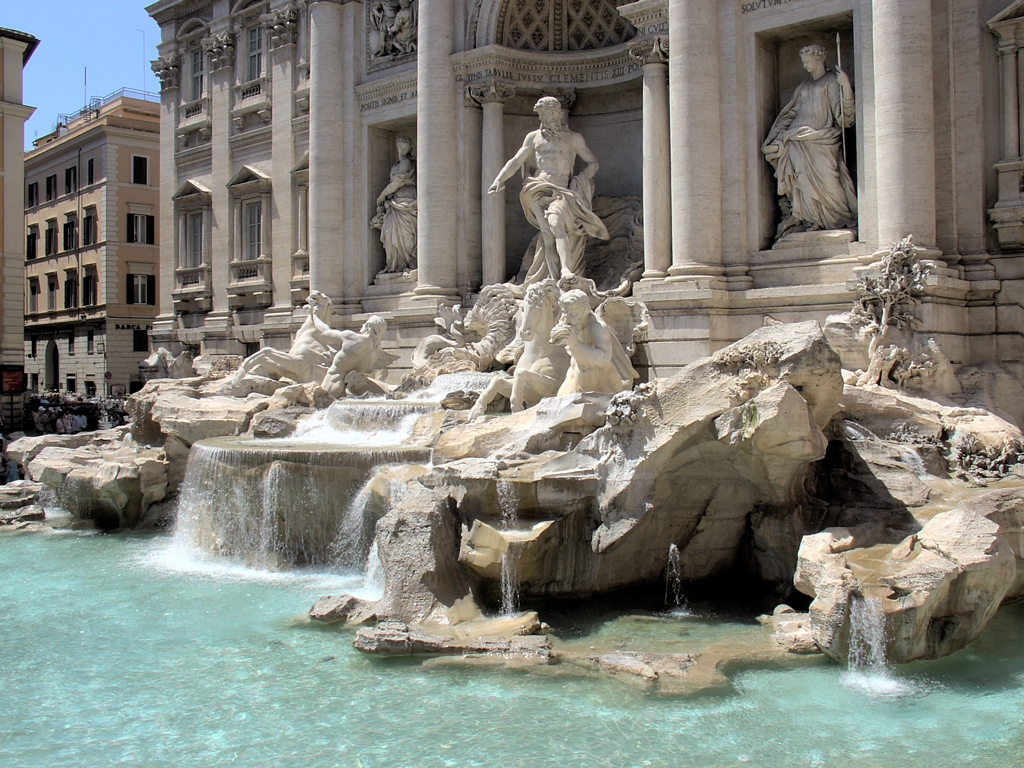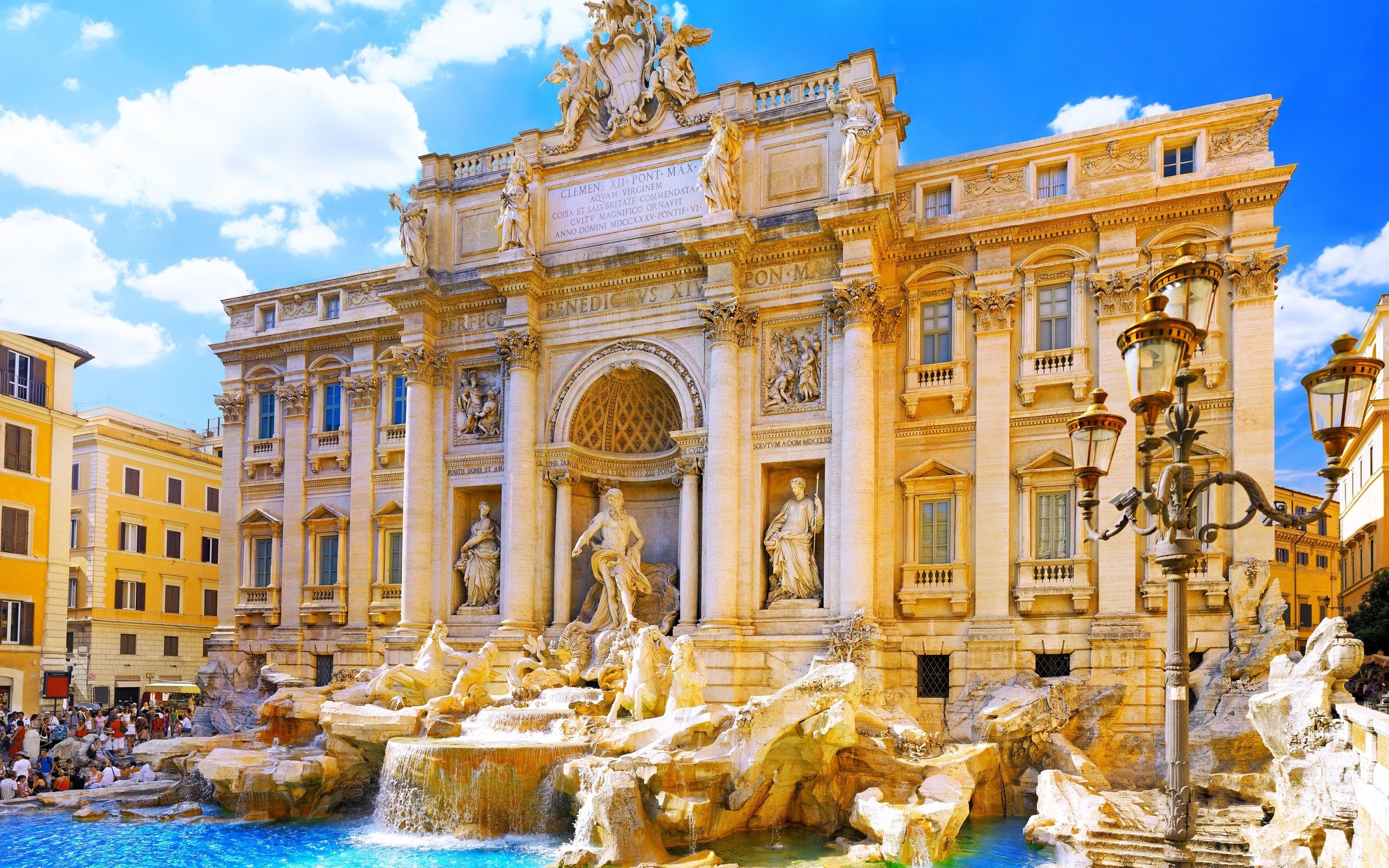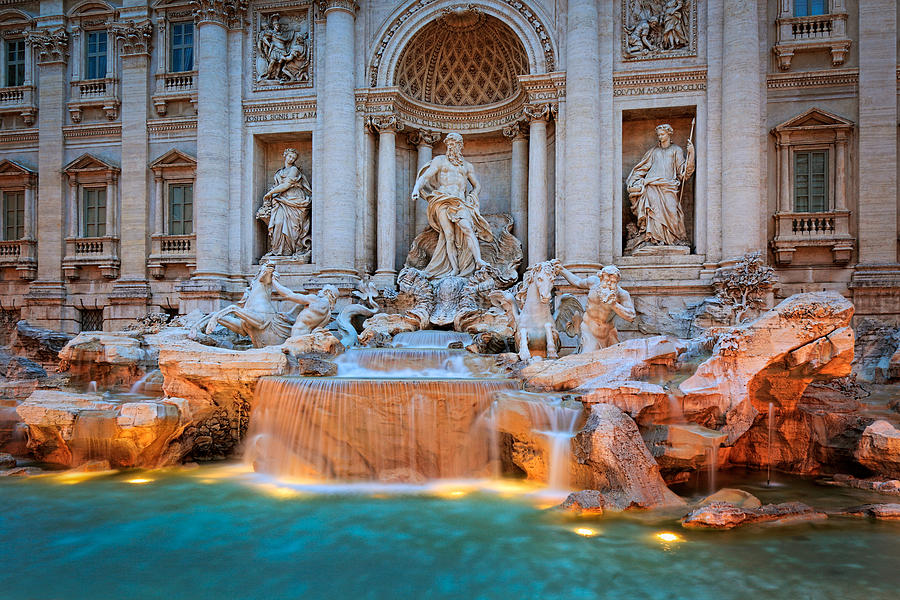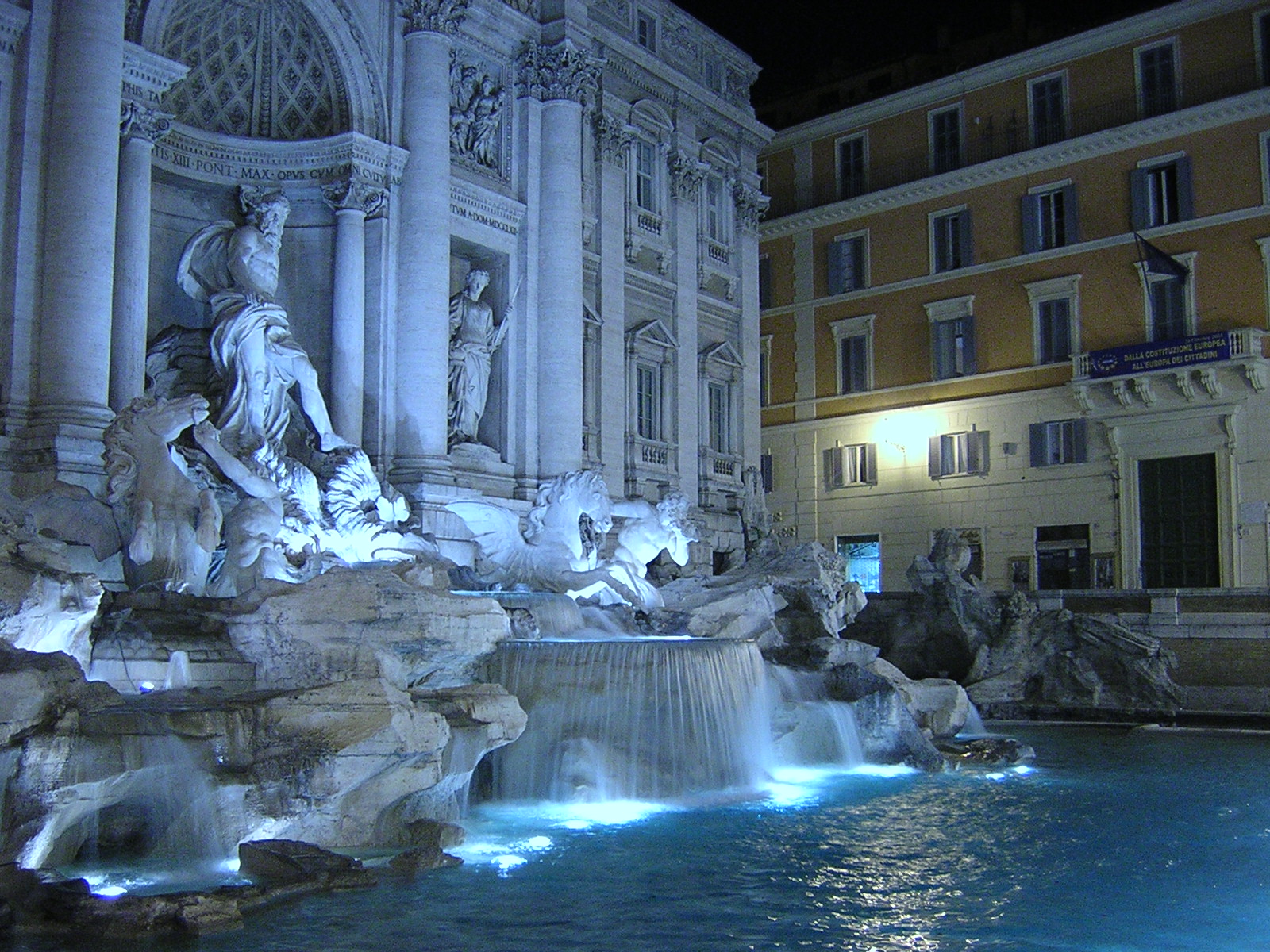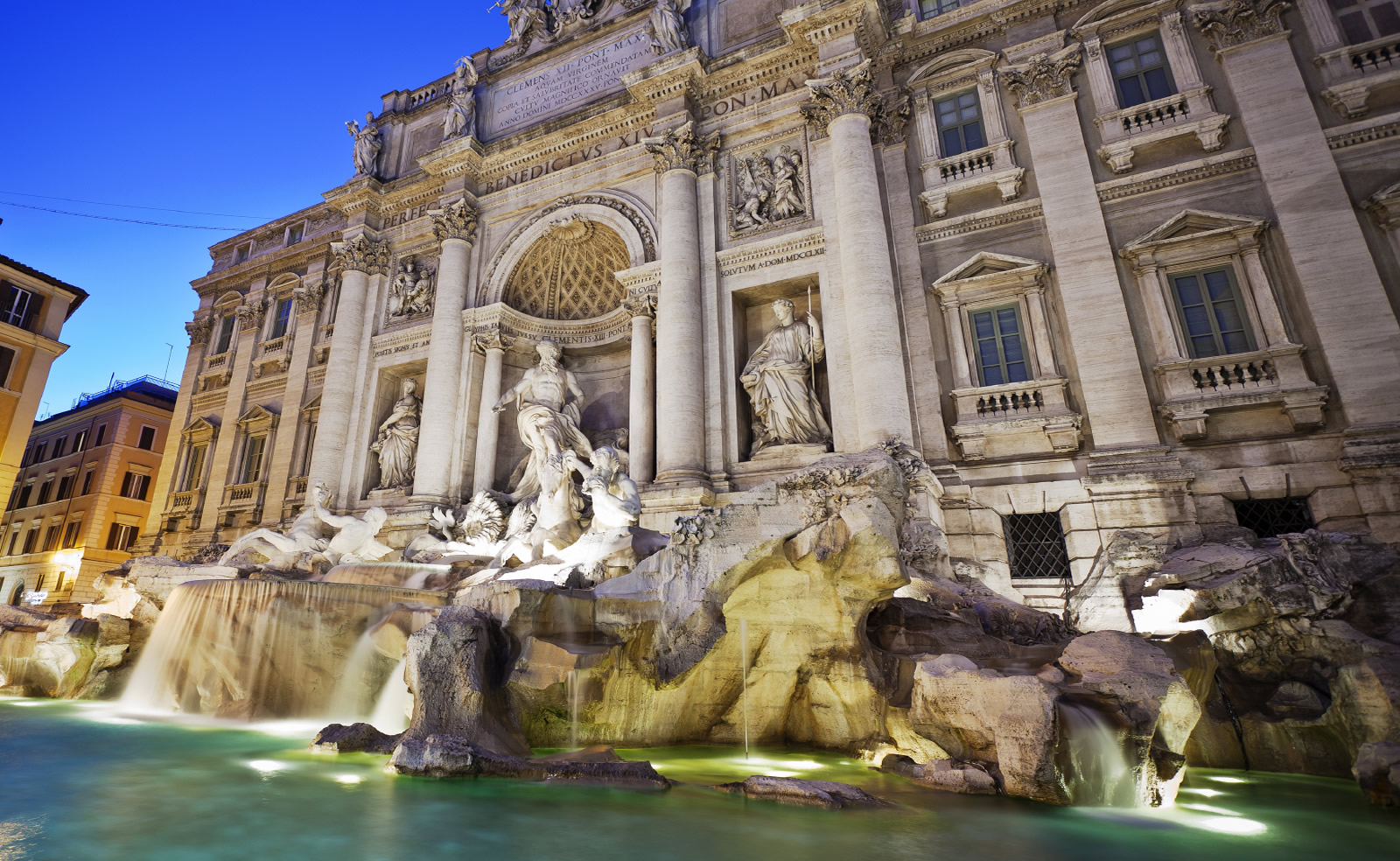Fontana Di Trevi– the largest Baroque fountain in the Trevi district of Rome, Italy designed like a victorious monument by an Italian architect Nicola Salvi in 1732 commissioned by Pope Clement XII in order to replace the Trevi Square already built during the papacy of Nicholas V in the fifteenth century. It was completed and inaugurated in 1762, by Giuseppe Panini; eleven years after Salvi had passed away. It is 26.3 meters (86 ft) high and 49.15 meters (161.3 ft) wide.
Its central figure is Neptune(god of the sea) up righted in a large niche, riding a shell-shaped chariot being pulled by two sea horses each guided by a Triton. Among the two horses, one is calm and the other is restive to symbolize the fluctuating moods of the sea sculpted by Pietro Bracci. There are 2 allegorical statues on both the sides of it representing Abundance (on the left) and Salubrity (on the right) and above it, are bas-reliefs. Water flows through the fountain and falls down over fake rocks into a large semicircular basin representing the sea which is reused to supply various other fountains in Rome. The fountain is at the joint of three roads marking the end point of the “modern, the Acqua Vergine( revived Aqua Virgo)- an aqueduct which supplied water to the ancient Rome.
A tradition is followed there of throwing coins in the fountain using the right hand over the left shoulder. It is estimated that approximately 3000 Euros are thrown each day which is used to subsidize a Rome’s supermarket.
Being the most famous fountain and historical cultural landmarks in Rome, it has become a popular tourist attraction in the world and has been featured in several notable pictures and scenes of the films, including Federico Fellini’s film La Dolce Vita and Roman holiday and many more.
It was renovated and equipped with reticulating pumps by skilled artisans in 1998 and again in January, 2013 it went for restoration sponsored by the Italian Fashion Company, Fendi.
Photos Of Fontana Di Trevi

